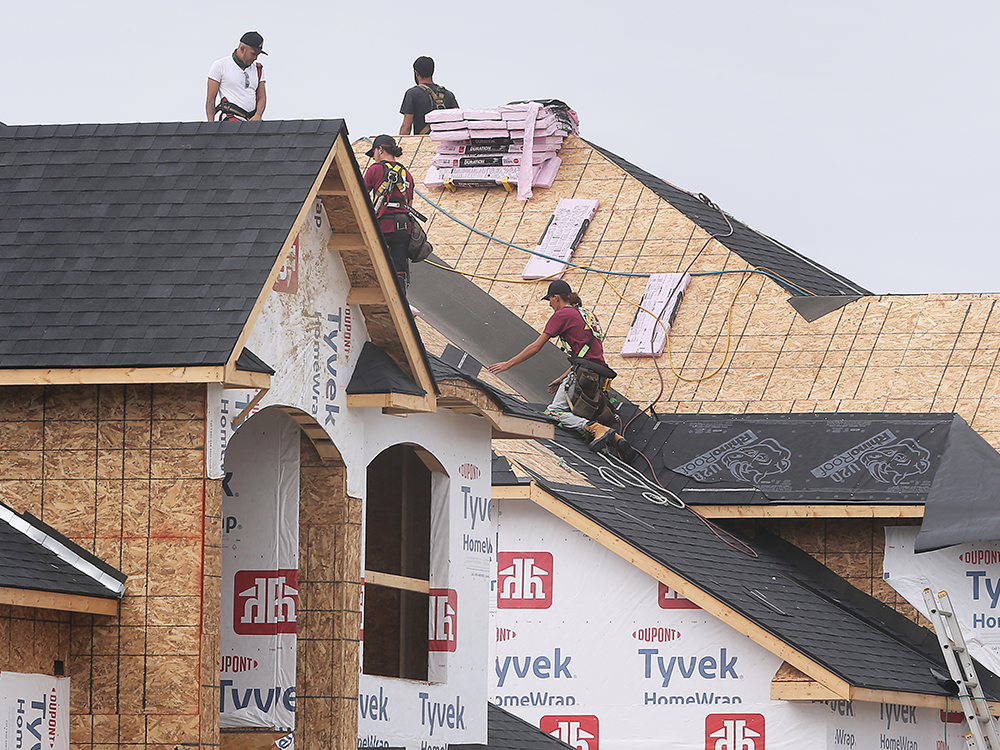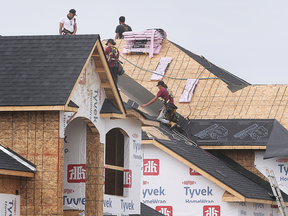Housing starts decline almost 3%, amid concerns about supply

Despite the monthly drop, the six-month trend remains positive

Article content
Canadian housing starts fell 2.8 per cent to 267,443 units on a seasonally adjusted annual basis in August, a decline that comes amid ongoing concern about a shortage of housing supply in the country.
Advertisement 2
Story continues below
Article content
Data from the Canada Mortgage and Housing Corporation released on Friday showed urban starts fell three per cent to 246,771, while multi-unit urban starts were down four per cent to 187,602 units. Urban starts of single-detached homes rose one per cent to 59,169 units.
Article content
Despite the overall monthly decline, the six-month trend in housing starts remained positive, with the annualized moving average ticking up to 267,309 units in August from 264,467 in July.

In terms of specific markets, Vancouver experienced a decline in single-detached units in which was offset by higher multi-unit starts. Toronto posted strong increases across the board, while Montreal recorded a large (33 per cent) decline in multi-unit starts, resulting in the overall decline for Canada.
Advertisement 3
Story continues below
Article content
Aled ab Iorwerth, the CMHC’s deputy chief economist, said the housing start decline was most pronounced in the urban multi-unit category, where construction companies are delaying starts because of uncertainty over the economy and interest rates.
“I think they’re taking a wait-and-see approach,” ab Iorwerth said.
“The apartment structure seems to be very, very sensitive to interest rates, interest rate expectations and macroeconomic uncertainty.”
The August figures comes after a recent report from the CMHC concluded that the country would need to build 3.5 million new homes by 2030 to reduce its shortfall and improve affordability. Canada is averaging only 200,000 to 300,000 new units per year.
Not to mention, the country experienced double-digit population growth between 2006 and 2021, a trend that is expected to continue given Ottawa’s commitment to welcoming 1.2 million newcomers into the country between 2021 and 2023 as part of an immigration strategy aimed at propelling economic growth and reducing labour shortages. The rising numbers of new Canadians combined with an increase in household formation overall is expected to keep demand well ahead of supply.
Advertisement 4
Story continues below
Article content
“More people are going to continue to want housing and if we’re not keeping up with that demand, we’re going to continue to see pressure on the supply that we do have, and we’ll see pressure on prices. We’ll see people that want homes unable to get into the market,” said Karen Yolevski, COO of Royal LePage Real Estate Services Ltd, in an interview.
-

Canada’s average home price down almost 4% from last year
-

Office buildings are having an existential crisis — and it’s not just work from home
-

Housing inventory may reach crisis point in major Canadian centres, report finds
Housing inventory levels in major Canadian housing markets have also dwindled over the past decade, with active listings in July running below the 10-year average in most cases, according to a recent report released by RE/MAX Canada.
Despite the slowdown, sales are still outpacing supply, Yolevski said.
“Supply is just not growing,” she said. “A downward trajectory of housing starts will have a negative impact on supply available in Canada which is something that we know all government levels are looking to address. But more needs to be done.”
• Email: shcampbell@postmedia.com
Advertisement
Story continues below








